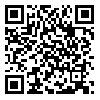Volume 6, Issue 2 (9-2017)
2017, 6(2): 15-26 |
Back to browse issues page
Download citation:
BibTeX | RIS | EndNote | Medlars | ProCite | Reference Manager | RefWorks
Send citation to:



BibTeX | RIS | EndNote | Medlars | ProCite | Reference Manager | RefWorks
Send citation to:
Mirzajani A, Hamidian A H, Karami M. Relationship Between Length of Food Chain of the South-west Caspian Sea and the Abundance of Captured Fish. Iranian Journal of Applied Ecology 2017; 6 (2) :15-26
URL: http://ijae.iut.ac.ir/article-1-860-en.html
URL: http://ijae.iut.ac.ir/article-1-860-en.html
Dept. of Environ., Faculty of Natur. Resour., Univ. of Tehran, Tehran, Iran. Inland Waters Aquaculture Research Center (Bandar Anzali), Iranian Fisheries Sci. Res. Institute, Agric. Res. Edu. and Extension Organization (AREEO), Iran.
Abstract: (9339 Views)
The fishery activities affect the lives of millions of people who live near the south of Caspian Sea, where the aquatic stocks have sophisticated ecological relationships. In this study, carbon and nitrogen stable isotope technique was applied as an ecological tool to interpret the fish catch values of different areas in relation to food chain. The average values of Captured bony fishes in six regions of Guilan province, including Astara, Hashtpar, Anzali, Kiashahr, Langroud and Chaboksar, were compared. For calculating food chain length using nitrogen stable isotope; Cerastoderma glucaum was considered as primary consumers for baseline values and two species Sander lucioperca and Alosa braschnokowi as top predators. The results showed that stable isotope ratios of δ13C and δ15N varied in different regions. The δ13C value was the lowest and the highest in Astara and Chaboksar (-21.7 ‰ and -20.1 ‰, respectively) while the δ15N value was the highest (5.7 ‰) in Astara and the lowest (4.2 ‰) in Chaboksar and Kiashahr. The highest calculated food chain length among the regions belonged to Kiashahr. Although a schematic correlation was observed between the aboundance of Captured fish and the length of food chain in different regions, the role of releasing millions of fish fries annually is also crucial in fish stock rehabilitation.
Send email to the article author
| Rights and permissions | |
 | This work is licensed under a Creative Commons Attribution-NonCommercial 4.0 International License. |







